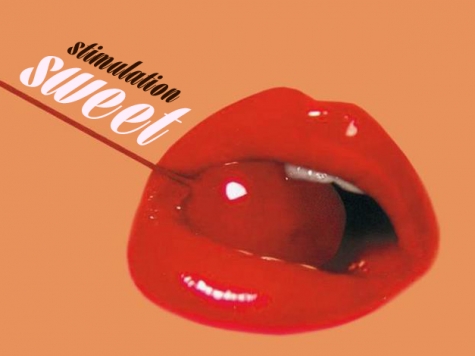For centuries, people have been theorizing about which foods, and qualities of foods, can help turn people on. Up until the eighteenth century in Europe, many aphrodisiac recipes followed the advice of the Roman physician, Galen. He thought that warm, moist foods, as well as “windy” foods (i.e. foods that caused us to produce wind), helped stoke the fires of love.
Why windy, you ask? According to Galen’s writings, “wind” inflated the penis and caused erection. An interesting theory, but not one I imagine was ever proven. Also popular was the philosophy of the “doctrine of signatures.” If something looks like a sexual organ, it must have sexual powers. Hence, the infamous oyster, for obvious reasons, and also the mandrake root, which was thought to cure female infertility because it looked like a woman’s thighs.
There are many fruits and vegetables that have been thought to turn us on through the ages. Onions, leeks, squash, asparagus, watercress and artichokes were all thought to stimulate desire and increase a man’s sperm count. Apples and pears, with their sexy shapes, as well as seeded fruits like figs and pomegranates, were seen as erotic and stimulating.
With the spice trade from Asia, the 14th century added new flavours to the aphrodisiac repertoire of Europe. Cloves, anise seed, cinnamon, ginger, thyme, cardamom and white pepper were all reputed to be powerful sexual stimulants in their native regions. Other foods, like potatoes (sweet and white) and cocoa, rare upon introduction from the new world, became the new vogue in stimulating foods. Clearly, the potatoes’ powers waned as they became more common.
And then there are the reproductive organs of animals. Eggs, fish roe and animal genitals were all thought to increase sexual potency and desire. This continues to this day in China, where at the Guolizhuang Restaurant in Beijing, you can order dishes like sheep gonad curry, ox penises cut into star shapes or thinly sliced donkey penis. As this is uncommon, even in China, the waiters inform diners of the properties of their dishes before taking orders. Women shouldn’t eat testicles, for instance, as the hormones can deepen their voices and cause them to grow beards. Penises, on the other hand, are no problem.
The term “aphrodisiac” comes from the Greek goddess of love, Aphrodite, who supposedly held sparrows sacred. Apparently, the ancient Greeks though that sparrows were particularly promiscuous (perhaps similar to our current ideas about bunnies). So people ate them, and specifically their brains, as aphrodisiacs. Another bizarre animal that was thought to have aphrodisiac powers was the skink (a relative of the newt), although no one knows exactly why.
Has the aphrodisiac effect ever been proven? In fact, it hasn’t. There is no food we know of that can physically turn a person on. It’s the sensory experience or mental associations with the food that can be sexy. Chocolate, long considered a powerful aphrodisiac, does contain a substance that is thought to arouse emotions. The amount of phenyl ethylamine (PEA) that our body absorbs from chocolate, however, isn’t enough to do anything. So that theory gone, it seems that it’s the smooth, rich, creaminess of chocolate that we love.
But how about alcohol? While we know that alcohol does have an effect on sexual desire, this has more to do with the dissolution of inhibitions, rather than any real sexual stimulation. But as Shakespeare noted in Macbeth, "It increases the desire but it takes away the performance.” Some drinking can be a good thing for sex; too much can be game over.
In The Art of Love, the Roman poet, Ovid wrote: "Prescribe no more my muse, nor medicines give / Beauty and youth need no provocative." But if you do need a little enticing, it’s sensual stimulation that helps. Sights, sounds and smells are as important as tastes. And hey, what girl wouldn’t get excited by a man who can bake a killer chocolate fondant?
By LV


